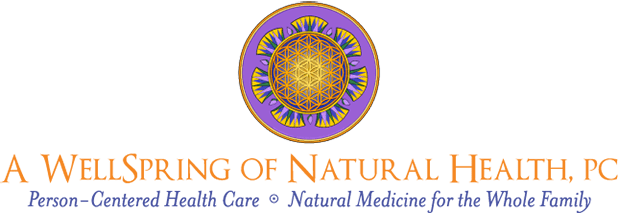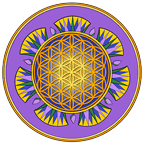General Articles
Herb, Nutrient, and Drug Interactions: Clinical Implications and Therapeutic Strategies
By Mitchell Bebel Stargrove, Jonathan Treasure J, and Dwight L. McKee
Elsevier Health Sciences
Presenting detailed, evidence-based coverage of the most commonly encountered therapeutic agents in modern clinical practice, this resource is designed to help you safely and effectively integrate herbal, nutrient, and drug therapy for your patients or clients. Combining pharmaceuticals with herbs or supplements may complement or interfere with a drug’s therapeutic action or may increase adverse effects. Additionally, drug-induced depletion of nutrients can occur. Comprehensive clinical data, quick-reference features, and the insight and expertise of trusted authorities help you gain a confident understanding of how herbal remedies and nutritional supplements interact with pharmaceuticals and develop safe, individualized treatment strategies for your patients.
Radiation Hormesis: Historical Perspective and Implications for Low-Dose Cancer Risk Assessment
By Alexander M. Vaiserman
Originally published in Dose Response (2010)
Republished in the US National Library of Medicine at National Institutes of Health
Current guidelines for limiting exposure of humans to ionizing radiation are based on the linear-no-threshold (LNT) hypothesis for radiation carcinogenesis under which cancer risk increases linearly as the radiation dose increases. With the LNT model even a very small dose could cause cancer and the model is used in establishing guidelines for limiting radiation exposure of humans. A slope change at low doses and dose rates is implemented using an empirical dose and dose rate effectiveness factor (DDREF).
Institute of Naturopathic Generative Medicine
Institute for Naturopathic Generative Medicine
URL: natgenmed.org
In its simplest sense, the generative paradigm is a meta-model of how and why events occur in complex living systems. Events that are generative embody the fundamental principles of holism, in that they result from the phenomena of emergence, a tendency for complex interactions to produce unanticipated, or even counterintuitive, results. Elements of the generative meta-model involve the use of exemplars with the ability to predict, acknowledge, align and harness emergent events.
Higher frequency of secretor phenotype in O blood group – its benefits in prevention and/or treatment of some diseases
By MS Jaff
Published on National Institutes of Medicine (NIH)
Originally published in Internal Journal of Nanomedicine (2010)
ABO blood groups and secretor status are important in clinical and forensic medicine and in relation to some diseases. There are geographic and racial differences in their frequencies, but the frequency of secretor status in different ABO blood group systems has not been determined yet. Therefore, the aim of this study was mainly to determine this point. Blood and saliva from 762 randomly selected apparently healthy adult individuals (480 men and 282 women) were examined to determine their ABO and Rhesus blood groups by standard conventional methods, and their secretor status by using Lewis blood grouping and/or hemagglutination inhibition test of saliva.
Dr. Bernard Lown and the first rule of doctoring
By Dr. John Mandrola
Published on Medscape
Originally Published on/by drjohnm.org
I knock, then enter the exam room.
“Hi. My name is John Mandrola.” (Maybe it is my age but I am moving away from calling myself Doctor Mandrola.)
“I am a heart rhythm specialist. I have looked at your chart so I know a little about your medical history.”
Gluten Causes Gastrointestinal Symptoms in Subjects Without Celiac Disease: A Double-Blind Randomized Placebo-Controlled Trial
By Jessica R Biesiekierski B Appl Sci, Evan D Newnham MD, FRACP, et al.
Published in American Journal of Gastroenterology (2011)
Despite increased prescription of a gluten-free diet for gastrointestinal symptoms in individuals who do not have celiac disease, there is minimal evidence that suggests that gluten is a trigger. The aims of this study were to determine whether gluten ingestion can induce symptoms in non-celiac individuals and to examine the mechanism.
Foundations of Natural Medicine Project
Codifying our knowledge. It's time...
There is a growing trend in global healthcare, today. What began with an increased focus on system and payment reform in many nations has now become a renewed interest in promoting health in individuals and in communities. Healthcare systems in many countries are failing to meet the healthcare needs of populations, and continue to provide care that exceeds their economic capacity. Consequently, many nations are re-directing healthcare systems and the concept of 'health' to focus on promoting health, rather than fighting disease. The vision of naturopathic medicine and of the Foundations of Naturopathic Medicine Project is to advance the health of individuals, communities, and support a healthy environment, through innovation in scientific research and clinical practice, based on investigating and understanding the nature of the healing process.
Evidence based medicine: a movement in crisis?
By Trisha Greenhalgh, Jeremy Howick, and Neal Maskrey - for the Evidence Based Medicine Renaissance Group
From The BMJ
Trisha Greenhalgh and colleagues argue that, although evidence based medicine has had many benefits, it has also had some negative unintended consequences. They offer a preliminary agenda for the movement’s renaissance, refocusing on providing useable evidence that can be combined with context and professional expertise so that individual patients get optimal treatment
Concomitant use of prescription medications and dietary supplements in menopausal women: An approach to provider preparedness
By Paula Gardiner, Mitchell Bebel Stargrove, and Tieraona Low Dog
Published online Dec 17, 2010 on Maturitas
Published in print Maturitas
Dietary supplements are becoming increasingly popular as therapies for symptom relief among menopause-age women in the United States. However, a large gap exists between research in the concomitant use of prescription medications and dietary supplements and provider preparedness to guide patient decision making. Many menopausal women take prescription medications, over the counter medications, and herbs and dietary supplements for climactic symptoms or other health conditions. With any drug, there is the potential for interactions. Women taking medications with a narrow therapeutic index, such as anticoagulants, anticonvulsants, and drugs for the treatment of chronic diseases, are at particular risk.
Classical Chinese Medicine
Website of the Work of Heiner Fruehauf and His Associates
URL: classicalchinesemedicine.org
classicalchinesemedicine.orgClassical Chinese Medicine reflects the voices of an international movement seeking to honour and restore the classical origins of Chinese medicine. This site features articles, lectures, and practical demonstrations by Heiner Fruehauf, PhD LAc, Founding Professor of the School of Classical Chinese Medicine at the National College of Natural Medicine in Portland, Oregon, and a group of like-minded scholars in China and the West who are committed to transmit the time-honoured science of Eastern medicine as a highly sophisticated and deeply spiritual art form.
Cancer Patients at Risk of Herb/Food Supplement – Drug Interactions: A Systematic Review
By Saud M. Alsanad, Elizabeth M. Williamson, and Rachel Howard
First Published Published online 26 August 2014 in Wiley Online Library
From Phytotherapy Research Volume 28, Issue 12, pages 1749–1755, December 2014
Herbal medicines and dietary supplements are commonly taken by patients with cancer, leading to concern over interactions with conventional medicines. A literature search was carried out to identify published studies exploring supplement use by patients with a cancer diagnosis. A total of 818 articles were retrieved using the key words, but only 41 are judged to be relevant based on title. Following the review of the abstracts, ten papers were considered to be potentially relevant, but of these, only two met the selection criteria, and three additional papers were identified from published reviews. Of 806 patients surveyed, 433 (53.7%) were reported to be taking combinations of supplements and drugs, and 167 incidents of risk were identified, affecting 60 patients (13.9%). The interactions identified were mainly theoretical and not supported by clinical data.
Origin of the linearity no threshold (LNT) dose–response concept
By Edward J. Calabrese
First Published in Archives of Toxicology
This paper identifies the origin of the linear- ity at low-dose concept [i.e., linear no threshold (LNT)] for ionizing radiation-induced mutation. After the dis- covery of X-ray-induced mutations, Olson and Lewis (Nature 121(3052):673–674, 1928) proposed that cosmic/ terrestrial radiation-induced mutations provide the prin- cipal mechanism for the induction of heritable traits, pro- viding the driving force for evolution. For this concept to be general, a LNT dose relationship was assumed, with genetic damage proportional to the energy absorbed.
How the US National Academy of Sciences misled the world community on cancer risk assessment: new findings challenge historical foundations of the linear dose response
By Edward J. Calabrese
First Published in Archives of Toxicology
This paper extends several recent publications indicating that Hermann J. Muller: (1) Made deceptive statements during his Noble Prize Lecture on December 12, 1946, that were intended to promote the acceptance of the linear dose-response model for risk assessment for ionizing radiation and (2) that such actions of Muller were masked by a series of decisions by Muller’s long-time colleague and esteemed radia- tion geneticist Curt Stern, affecting key publications in the mutation literature. Such actions further enhanced acceptance of the linearity dose-response model while preventing Muller’s deceptions from being discovered.
Bee Venom Therapy for Chronic Pain
By Dietrich K. Klinghardt, MD, PhD, FAANaoS-C, FABPMS-C
Presented at the 13th Annual Meeting of the American Academy of Neurological Co' Orthopaedic Surgeons, December 15th, 1989, Ballys Hotel, Las Vegas, Nevada.
First reports about the use of bee venom date back to the last century. In German literature and also several eastern European countries are found anecdotal reports mostly about bee-keepers who had been accidentally stung by a large number of bees. These people observed, subsequently, that their longstanding previous pain from arthritis of their knees, hips or other arthritic joints, disappeared after the stings & for long periods of time. When the arthritic pain reappeared, these bee-keepers would expose themselves again to these bee-stings with similar pain relief and success. This led to the first scientific studies about the use of bee stings in the treatment of pain.
Polypharmacy, Interactions and Collaborative Care in the Middle-Aged and Beyond
By Mitchell Bebel Stargrove, ND, LAc and Lori Beth Stargrove, ND
Originally presented as a poster on May 18, 2012 at The International Research Congress on Integrative Medicine and Health 2012
From BMC Complementary and Alternative Medicine
INTRODUCTION
In the scientific literature the subject of “interactions” has typically referred to drug-drug interactions. Recently, however herb-drug and drug-nutrient interactions have become an ever-increasing public health concern. Unfortunately the current literature has been poorly representational of these types of interactions. Viewed through a more inclusive paradigm, the subject of “interactions” can play an important role in the emergence of individualized, person-centered healthcare, particularly in the context of aging and the elderly.
Aspirin Lowers Stroke Risk in Women, but Not Men: Presented at AHA
By Charlene Laino
From First Word Pharma
Aspirin can reduce significantly the risk of ischemic stroke in women, although it appeared to have no such protective effect in men, according to findings from a meta-analysis.
David L. Brown, MD, Chief, Division of Cardiovascular Medicine, State University of New York, Stony Brook, New York, United States, presented the findings here on November 15th at the American Heart Association Scientific Sessions 2005 (AHA).
Peer-Reviewed Research Backs Homeopathy
By Bryce Edmonds
From Natural Foods Merchandiser
Increasingly, science is giving a firm foundation to this oft-misunderstood medicine Here's a riddle: What is the only natural remedy classified as a drug, but yet no one knows how it works? Answer: homeopathy. Yes, strangely, the one system that may make healing claims and still be within the law is the one system that many people scoff at because of its unorthodox approach.
CRH Receptor Variant Predicts Response to Antidepressants
By Megan Rauscher
From Reuters Health
Individuals with high levels of depression and anxiety respond better to antidepressant medication if they carry a specific variation in the corticotropin-releasing hormone receptor type 1 (CRHR1) gene, results of a study indicate.
Negative Emotions May Trigger Isehemie Stroke
Reviewed by Gary D. Vogin, MD
From Neurology. 2004;63:2006-2010
Dec. 13, 2004 — Negative emotions, anger, and sudden changes in posture are independent triggers for ischemic stroke, according to the results of a case-crossover study published in the Dec. 14 issue of Neurology.
"We know a lot about risk factors that make people more likely to have a stroke in their lifetime, such as smoking and high blood pressure, but until now we haven't had any information on what causes a stroke to occur at a particular time," lead author Silvia Koton, PhD, MOccH, RN, from Tel Aviv University and the Israel Center for Disease Control, says in a news release. "These findings may help us understand how these triggers result in stroke."
Estrogen Linked to Gallbladder Disease in Randomized Trial
By Anthony J. Brown, MD
From Reuters Health
Postmenopausal women who use conjugated equine estrogens (CEE) or estrogen plus progestin are at increased risk of biliary tract disease, according to findings from a randomized trial of healthy women. The elevated risks ranged from 54% to 93% depending on the estrogen and disease type.
Homocysteine and MTHFR Mutations: Relation to Thrombosis and Coronary Artery Disease
By Elizabeth A. Varga, MS; Amy C. Sturm, MS; Caron P. Misita, PharmD; Stephan Moll, MD
From American Heart Association Journals
Homocysteine is a chemical in the blood that is produced when an amino acid (a building block of protein) called methionine is broken down in the body. We all have some homocysteine in our blood. Elevated homocysteine levels (also called hyperhomocysteinemia) may cause irritation of the blood vessels. Elevated levels of homocysteine show an increased risk for (1) hardening of the arteries (atherosclerosis), which could eventually result in a heart attack and/or stroke, and (2) blood clots in the veins, referred to as venous thrombosis.
Effects of Qigong on Glucose Control in Type 2 Diabetes A randomized controlled pilot study
By Guan-Cheng Sun, PHD, Jennifer C. Lovejoy, PHD, et al.
From Diabetes Care
Study from the Bastyr University Research Institute, Kenmore, Washington.
Qigong is a traditional Chinese energy medicine practice combining breathing, movement, and meditation. Although previous studies suggest that Qigong may be a beneficial adjunct treatment for individuals with type 2 diabetes (1–3), few randomized controlled trials of Qigong in patients with type 2 diabetes have been performed. The purpose of the present study was to investigate the effects of Qigong relative to physical exercise or standard care on glucose control in adults with type 2 diabetes.
Mitochondrial DNA haplogroups and risk of transient ischaemic attack and ischaemic stroke: a genetic association study
By Patrick F Chinnery, FMedScia, Hannah R Elliott, PhDa, et al.
From The Lancet Neurology
SUMMARY
Genetic factors have a role in the pathogenesis of ischaemic stroke, but the main genes involved have yet to be defined. Mitochondrial mechanisms have been implicated in the pathophysiology of acute stroke, but the role of mitochondrial DNA (mtDNA) has not been comprehensively studied. We investigated whether there is an association between mtDNA haplotypes and incidence of stroke.
Associations of the Fecal Microbiome With Urinary Estrogens and Estrogen Metabolites in Postmenopausal Women
By Barbara J. Fuhrman, Heather Spencer Feigelson, Roberto Flores, Mitchell H. Gail, Xia Xu, Jacques Ravel, and James J. Goedert
From J Clin Endocrinol
Context: The gut microbiota may influence the risk of breast cancer through effects on endogenous estrogens.
Objective: The objective of the study was to investigate whether urinary estrogens and estrogen metabolites are associated with the diversity and composition of the fecal microbiome.



